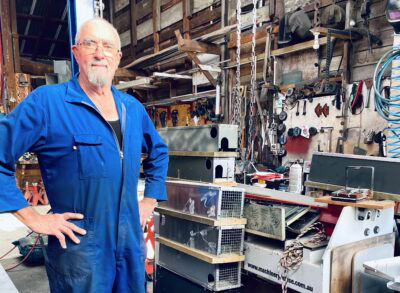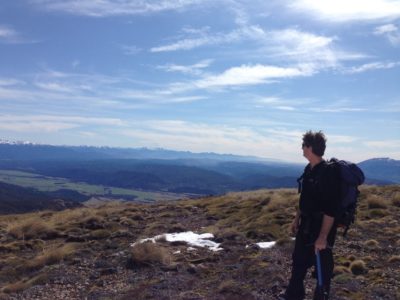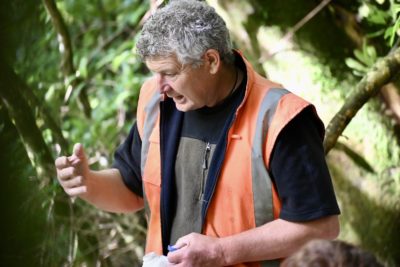Salisbury School in Richmond has been supporting environmental restoration in Nelson Tasman for decades—propagating, growing and donating native plants; landscaping its premises; and supplying eco-sourced seeds. Salisbury’s nursery has provided plants for both TET’s Waimea Inlet Restoration Partnership and Battle for the Banded Rail initiatives. Which is why, as far as we’re concerned, the entire school is a Conservation Hero!
Stately heritage trees line the driveway into Salisbury School. Planted by settler William McRae shortly after his arrival in Nelson in 1850, the oaks, pears and cedars all carry preservation orders. According to Mary Ellen O’Connor in her book, Salisbury School: A Lesson in Special Education (2008, Te Whanau O Salisbury), they constitute “the most important historic collection of trees in Richmond.”
Plants are important at Salisbury—not just for their aesthetic value, like the flowering cherries at the entrance to the teaching area—but for the many real-time opportunities they give the students learning to navigate and manage their own complex needs.
“I’ll often take the girls for a bit of a walk if they need a bit of a chat,” says deputy principal, Jen McMahon. “And we’ll head down to the native garden or we’ll go pick rhubarb or satsumas on the school grounds to gift to people.”
Generosity’s important at Salisbury, too.
A regional leader in commitment to the environment
Salisbury was Nelson Tasman’s first Enviroschool (beating Ngatimoti School by just a day!) and currently holds Green-Gold status. Gardening and environmental work feature strongly in the curriculum, supporting maths, science, health and P.E.
The school is working with Tasman District Council’s Jessie Cross to both review its practice and create a 3–5 year plan to future-proof its environmental focus.
“It’s really important for us to sustain what we do so that it doesn’t just sit with certain individuals, and that it’s a culture within the school,” Jen says. “And that future generations will continue to apply this philosophy around ‘education outside’, but also looking after and caring for our environment.”
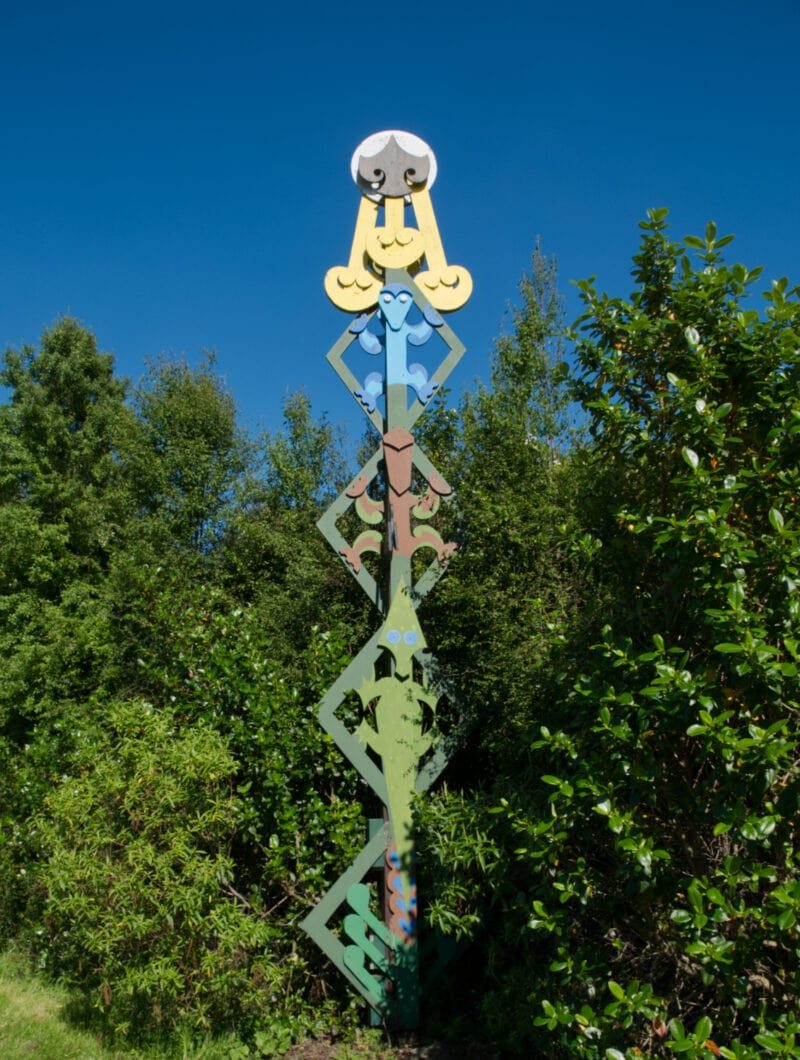
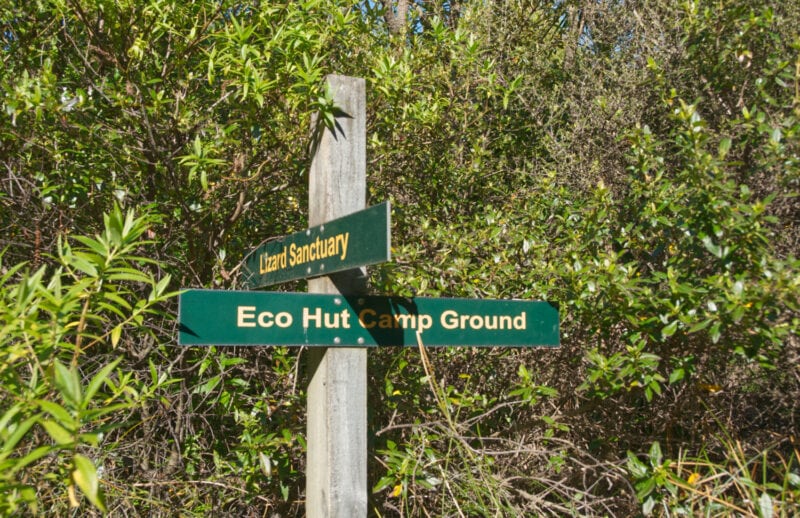
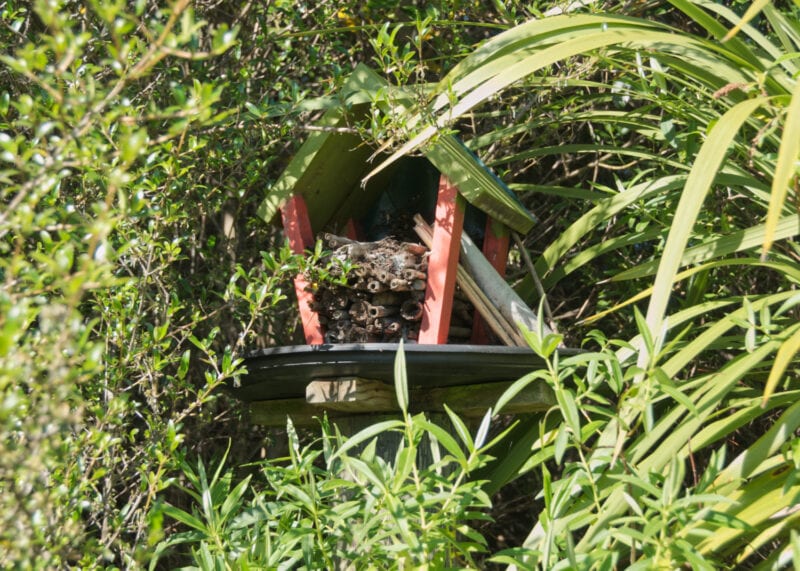
Meet some of Salisbury School’s conservation heroes
Carolyn Shirtliff: conservation catalyst
Carolyn, Salisbury’s Student Health Coordinator, joined the school as a residential social worker in 1981. With a passion for the environment and itchy green fingers, she found herself becoming the school’s “environmental person”, taking groups of students for plant-related learning sessions.
“I took half a dozen girls for horticulture… and half a dozen for environmental studies,” she says. “But then they just sort of grew and all the classes got involved.”
She worked with the horticulture group to propagate and grow vegetable and flower plants—and, later, natives—in the nursery, which were then sold as fundraisers at local fairs.
“It was a good idea because we could take students with us,” she says. “It taught them social skills, money skills; just general public stuff, which was great.”
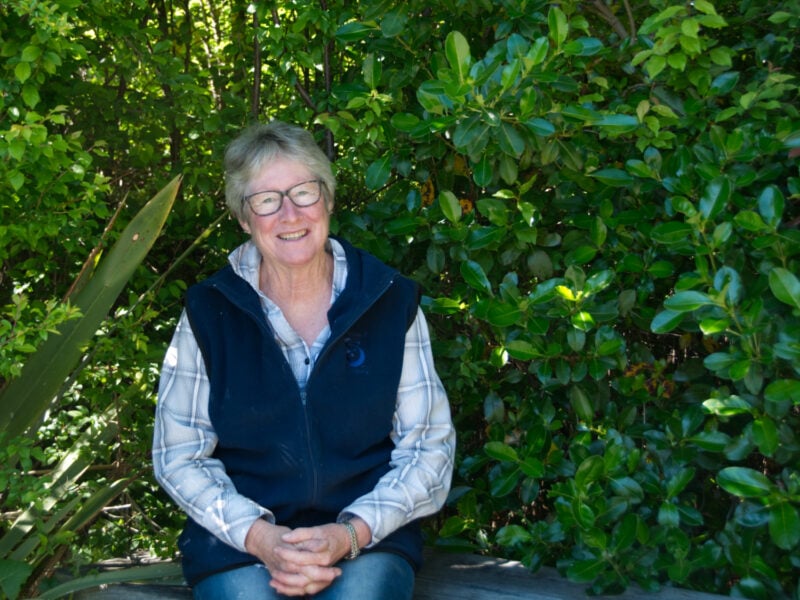
In 2003 Carolyn played a key role in the formation of an environmental group at the school. The group began with projects on site, building worm farms and compost bins, and planting native seedlings. The first section of Māra Rakanui, Salisbury’s restoration planting area, was carried out the following year, following a lowland plan drawn up by DOC biodiversity ranger, Roger Gaskell.
“The students discovered there was this big area, and… lowland planting had gone in the Richmond area” says Carolyn. “So they approached me to approach the Board to say, ‘Could we do something please?’ So it started with a group of six girls.”
Successive sections of the design were planted in 2008 and 2013, with a big push in 2016 to mark the school’s centenary. All the plants are eco-sourced and were propagated in the school’s nursery. They include Carex secta (pūkio), kahikatea, Plagianthus, maire, māhoe, Pittosporum, beech, kānuka, mānuka and 10 varieties of flax.
A walkway through the plantings opens to a grassed area for camp-outs. It also houses Bradshaw Hut, an eco-hut that was a school project over 2009–2010. Further along, there’s a boardwalk through plantings created for lizard habitat. This leads out to the formal entrance of the māra, where a mauri stone was blessed by Archdeacon Harvey Ruru in association with DOC Pou Tairangahau (cultural adviser), Barney Thomas, and then buried.
The māra is a popular field trip destination for other local schools and pre-schools, a fact that makes Carolyn proud. “This was always meant to be a resource for the whole community,” she says. “That’s a very big part of it all.”
Looking ahead, she says she’ll probably still be doing what she does at Salisbury when she’s 90. When asked why, she smiles.
“I just love growing things.”
Sara: Salisbury School student
Note: We’re using a pseudonym for this student.
Fifteen-year-old Sara has an affinity for plants, so when given the opportunity to select a South Pacific Education Course (SPEC) study module, she chose Gardening.
Sara’s planted a flower garden, helps pot up native seedlings, and grows strawberries and herbs. She’s won an Enviro Senior Award and is also working towards her Bronze accreditation as a Student Volunteer Army member, meaning she has to clock up 32 hours of volunteer work on top of the five she completed to get her membership. Weeding and tidying up the area outside the school for Keep New Zealand Clean Week will contribute towards this, as well as the Waimeha/Waimea Inlet cleanup project she’s participating in with other local students outside Salisbury.
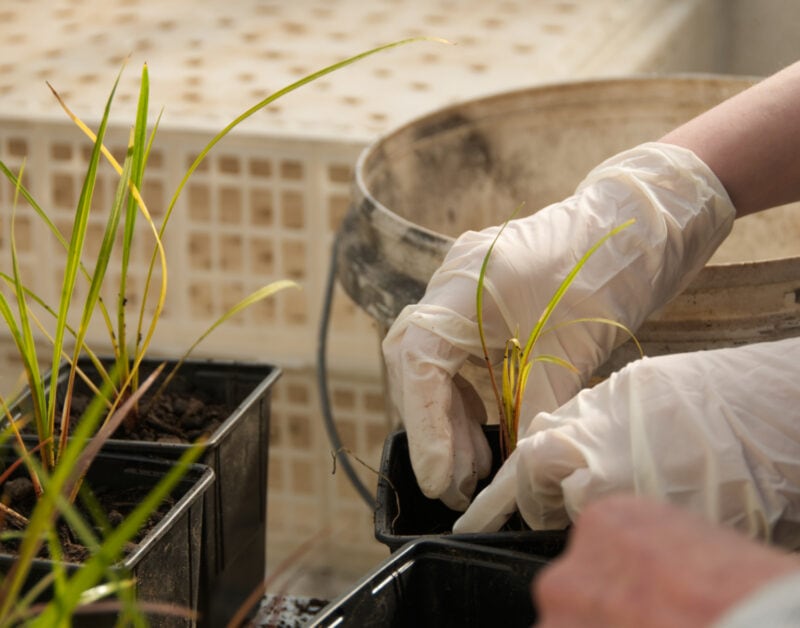
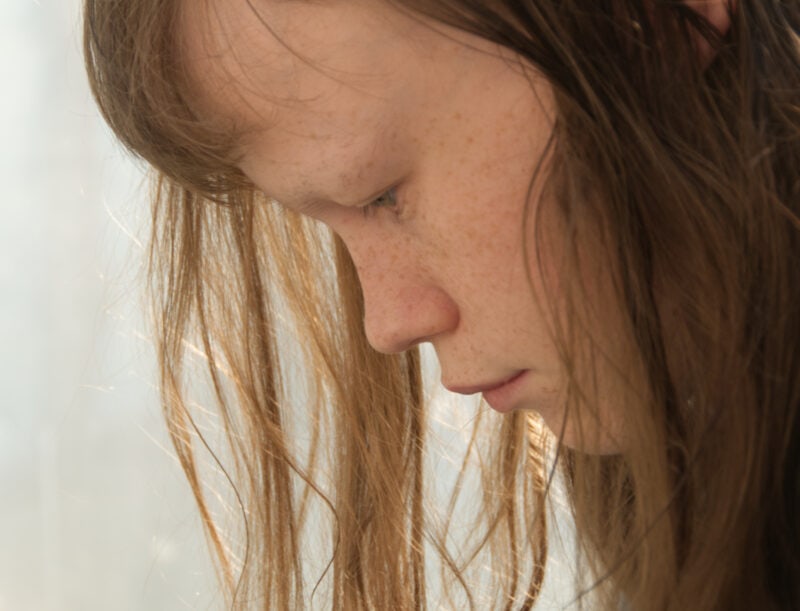
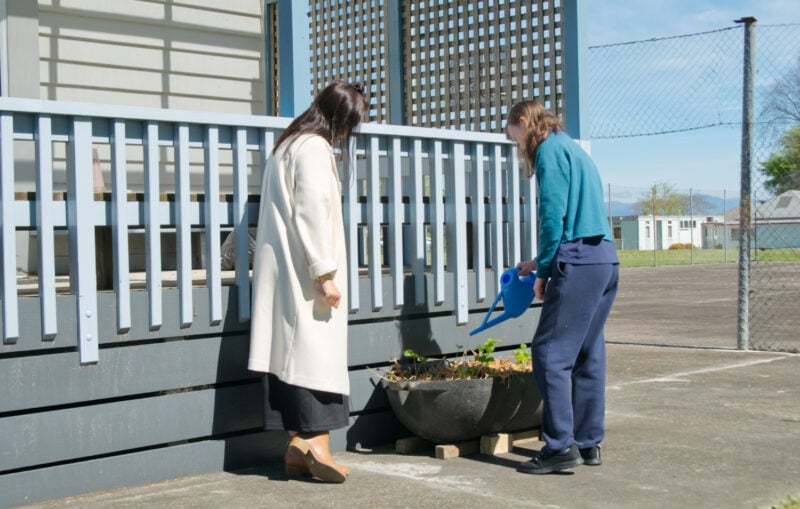
Sara will be going to a local high school next year. According to Jen McMahon, Sara’s made incredible progress during her time at Salisbury.
“So Sara… will go home. And instead of watching TV or spending time on devices she’ll be outside,” she says. “She’ll have the skills and the knowledge to maintain the garden and grow food, which she’ll take into adulthood.
“Salisbury is really about lifelong learning… transforming the way that the girls learn how they feel about themselves, and the skills that they can offer through life. And the enviro work we do is a really huge piece of that.”
Jen McMahon: Deputy Principal
Jen’s background is in mainstream schooling. Originally from the UK, she taught digital technology for 10 years before moving to New Zealand with her Kiwi husband in 2018.
“I just fell in love with Salisbury because of the park-like environment, and I could see the impact that it had on the girls, in terms of their well being and their mental health,” she says.
“I’ve seen so many children, young people struggle in mainstream settings and mainstream classrooms, and to be able to take that classroom outside—whether it’s stawberry planting or worm farms, or sometimes the girls will just sit outside and do their art lessons—feels really special.”
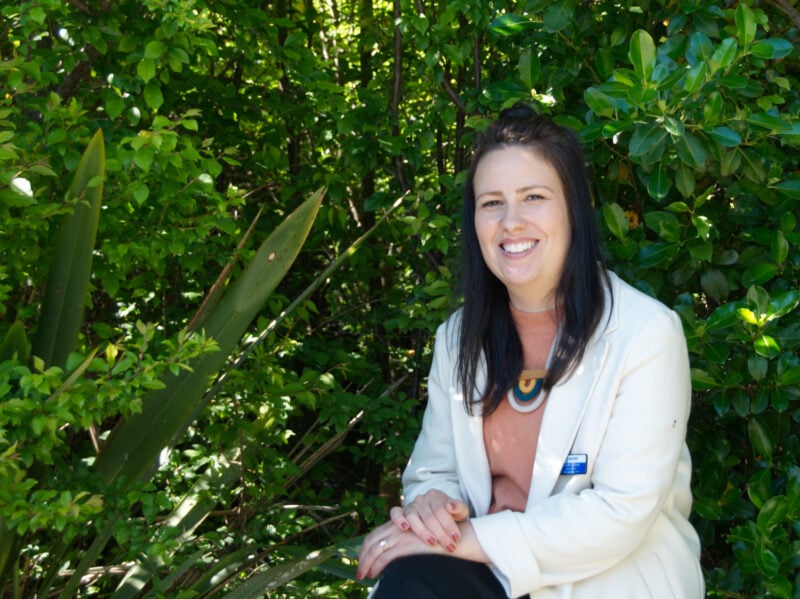
Jen’s committed to helping realise the school’s vision for “greater possibilities in life”.
“A lot of our girls come to Salisbury and they have a sense of failure in mainstream school,” she says. “When they come here, they leave a legacy behind—planting seeds in the native garden or embedding recycling bins in every single room at school—and the impact on their self esteem and their confidence is enormous. It’s transformative, and it’s life skills that they can take with them.”
This passion doesn’t just stem from a philosophy—for Jen, it’s personal as well. Her sister-in-law is a former Salisbury student so she’s seen first-hand how the school’s influence on its girls continues to play out in adulthood.
“She volunteers in a retirement village,” Jen says. “She makes cups of tea and hangs out the washing. She’s a very confident member of the community and she talks really fondly of her time at Salisbury.”
Jon Robertson-Stone: conservation crusader
Jon’s been the chef at Salisbury for 10 years now. He’s also the TET connection in this story, having volunteered with Battle for the Banded Rail (B4BR) for the last six years.
Jon has always loved plants and animals, so when he came into Carolyn’s orbit it was inevitable that he’d also get involved with the school’s nursery. There’s a “partners in crime” element to their working relationship, especially when they talk about the plantings leading to the Bradshaw hut.
“Carolyn and I are naughty,” he says. “We like putting more and more plants in. We don’t ask permission; we just do it.”
It was Jon who first suggested that Salisbury supply B4BR with native plants. Initially, the school donated these but when the project secured funding, it was able to make a financial contribution back. In 2020, the school provided B4BR with over 1,000 plants. This year, it supplied 561 plants, with a futher 992 going to One Billion Trees.
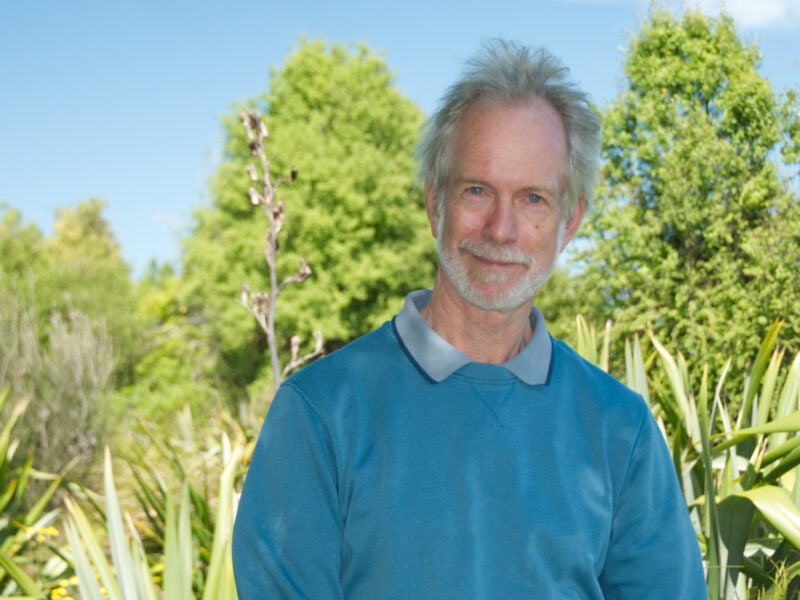
Jon’s relationship with B4BR began through the trapping work carried out around Waimeha/Waimea Inlet by his late son, Navar. A trainee DOC ranger, Navar helped convince reluctant landowners to allow predator traps on their properties.
“He knew all the owners because when he was younger he used to shoot rabbits, he used to trap for them, do possums, so he knew everyone,” says Jon.
Since then, Jon himself has helped encourage landowners with estuary frontage to put some of their land in restoration plantings, which he personally maintains. Battle for the Banded Rail’s Kathryn Brownlie says he maintains the area so well, it looks “almost manicured.”
“[When] he sees a little seedling coming up, he’ll put a plant guard on it,” she says. ”It’s just amazing to go there. The plants thrive because they’re so well looked after.”
A particular mission of Jon’s is identifying suitable locations around the estuary for planting Grey Saltbush. Salisbury propagates these critically threatened plants from seed—in a stroke of great fortune there happened to be two of them, a male and a female, identified in the school’s lizard sanctuary.
Jon says he’s going to retire next year. The declaration isn’t very convincing, as he talks of still coming in to Salisbury and keeping a hand in as a volunteer. He’ll probably keep baking the “loads of biscuits” he supplies to his fellow B4BR volunteers on planting days, too.
“I give them morning tea biscuits because they’re volunteers; really, that’s one of the most important things,” he says.
“It’s all about the relationships.”
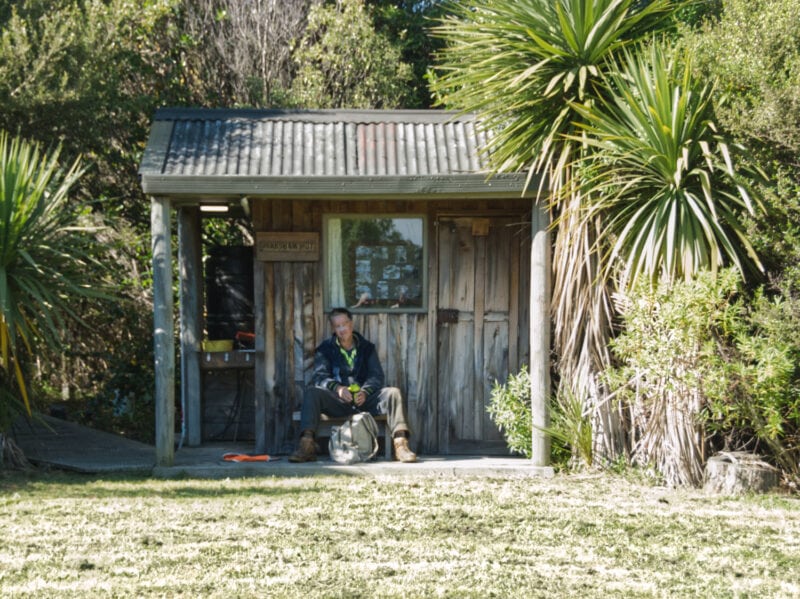
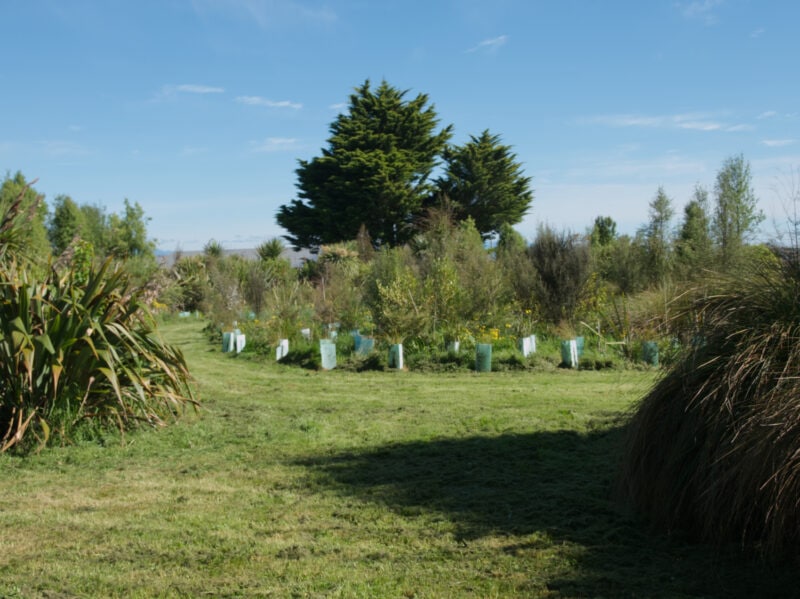
Looking ahead
Change is in the wind at Salisbury School, especially around succession planning. Carolyn and Jon are working with the school’s grounds and property staff David and Steve, hoping to train them up in plant propagation and horticulture so they can take the baton forward.
The nursery will likely be demolished as part of scheduled building works, so there’s talk of fundraising to replace it.
For many years, this school has quietly contributed a great deal to conservation efforts in Nelson Tasman—almost as a side-effect of its larger mission to grow confidence and skills in the vulnerable young women it exists to support.
Care. Nurture. Generosity. They’re alive in every part of this place and in all of its people.
Heroes for sure.

